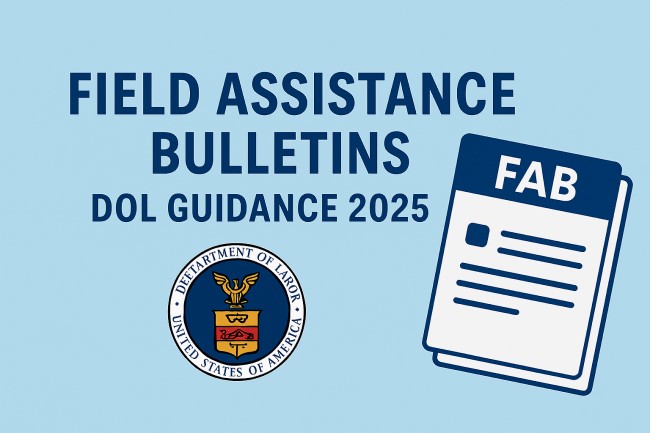Field Assistance Bulletin: A Comprehensive Guide to Labor Enforcement Policies

The term Field Assistance Bulletin (FAB) might sound technical, but for businesses, HR professionals, and legal advisors, it’s a crucial concept that shapes how labor laws are understood and enforced in the United States. Issued by the Wage and Hour Division (WHD) of the U.S. Department of Labor, these bulletins are internal guidance documents aimed at providing clarity on specific issues relating to federal labor laws.
This article explores what a Field Assistance Bulletin is, why it matters, how it impacts employers and employees, and highlights recent notable FABs including updates on artificial intelligence in the workplace and independent contractor rules.
What is a Field Assistance Bulletin?
Definition and Purpose
A Field Assistance Bulletin is an official document used by the Wage and Hour Division to guide investigators and staff on how to interpret and enforce federal labor laws. These bulletins are not laws themselves but serve as internal tools for ensuring consistent application of the law across regions and case types.
Not Legally Binding but Practically Powerful
Although FABs do not hold the weight of legislation, they carry significant influence. They are issued when:
-
A new law or regulation requires interpretation.
-
There’s a need for clarification following a court decision.
-
The Department wants to standardize enforcement practices.
Why Are Field Assistance Bulletins Important?
Legal and Practical Significance
While not enforceable in court like statutes or regulations, FABs play a powerful role in shaping how laws are applied on the ground. For instance, an employer might not be legally required to follow a FAB, but failing to do so could lead to being on the wrong side of a government investigation.
Ensures National Consistency
The WHD has field offices across the country. FABs help maintain uniformity in enforcement regardless of location or investigator. This ensures that a wage violation in Texas is treated similarly to one in New York.
Guides Employer Compliance
Many employers voluntarily align their practices with the latest FABs to avoid penalties. Staying informed about new FABs can be the difference between smooth operations and costly legal disputes.
Key Areas Covered by Field Assistance Bulletins
Common Topics in FABs
FABs are often released to address pressing issues or new developments in labor policy. They cover areas such as:
Overtime and Wage Rules
Clarifications about how overtime pay must be calculated, what constitutes “hours worked,” and common pitfalls employers must avoid.
Family and Medical Leave Act (FMLA)
Detailed guidance on eligibility, required documentation, and employer obligations under the FMLA.
Child Labor Laws
Instructions on permissible work conditions, hours, and industries for minors.
Independent Contractor vs Employee Classification
Rules for determining whether a worker should be classified as an employee or an independent contractor.
New Technologies and AI
As automation and AI technologies are increasingly used in the workplace, FABs have started to address the implications of these tools on labor rights.
Recent and Notable Field Assistance Bulletins
Highlights of Recent FABs
FAB 2024-1 – Artificial Intelligence in the Workplace
One of the most discussed recent FABs, this bulletin addressed how automated tools and AI systems must comply with labor laws. It warned employers not to rely solely on algorithms for timekeeping, breaks, or scheduling, as this could violate the Fair Labor Standards Act (FLSA). Although later withdrawn in 2025 following a change in presidential executive orders, it set a precedent for how technology should be human-reviewed in labor contexts.
FAB 2025-1 – Independent Contractor Classification
Issued in May 2025, this bulletin reinforced the criteria for determining who is an employee versus an independent contractor. It emphasized a multifactor “economic reality” test, weighing control, opportunity for profit, and degree of permanence in the relationship.
FAB 2025-2 to FAB 2025-4 – Seasonal and Home Care Employment
These bulletins addressed specific enforcement priorities:
-
Protecting farmworkers under the H-2A visa program.
-
Guidelines for seeking damages in administrative settlements.
-
Proper treatment of home care workers under wage laws.
How Employers Should Use FABs
Proactive Compliance Measures
Rather than reacting to enforcement actions, employers should use FABs to evaluate and improve their internal policies.
Review and Revise Policies
Stay updated on the latest FABs and review policies related to timekeeping, scheduling, pay calculation, and worker classification accordingly.
Train HR and Management Staff
Ensure that those who interact with labor regulations on a daily basis understand the guidance provided in FABs.
Conduct Internal Audits
Perform regular compliance audits focusing on the issues highlighted in recent FABs to minimize legal exposure.
How FABs Affect Employees
Know Your Rights
Employees often benefit indirectly from FABs because they clarify what employers are required to do. For instance, an employee might recognize their rights to nursing breaks or overtime pay because a FAB detailed how the law applies in that area.
Reporting Violations
FABs also guide investigators on how to handle complaints, giving employees more predictable outcomes when they report workplace violations.
Future of Field Assistance Bulletins
Expanding into New Territories
As workplaces evolve, FABs are likely to address emerging concerns such as:
-
Remote work policies
-
Workplace surveillance
-
Use of biometric data for time tracking
More Frequent Updates
Given rapid legal and technological changes, the Department of Labor may issue FABs more frequently to provide timely guidance on urgent issues.
Conclusion
Field Assistance Bulletins are essential tools in the ever-evolving landscape of labor law enforcement. While not legally binding, they serve as critical guidelines for ensuring that both employers and employees understand their rights and responsibilities. From regulating how artificial intelligence is used in the workplace to clarifying the rules around independent contractor classification, FABs help bridge the gap between the letter of the law and its application.
For businesses aiming to stay compliant and avoid penalties, regularly reviewing and aligning with the latest FABs isn’t just advisable—it’s necessary. As labor issues continue to evolve, the importance of these bulletins will only grow.



